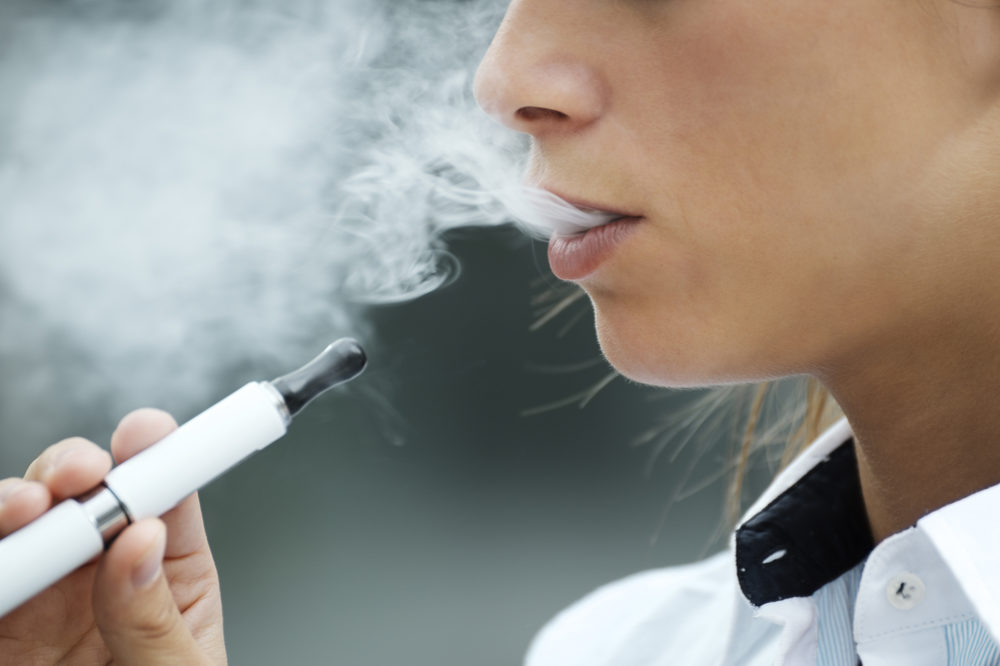Second-Hand Exposure to Vaping Increases Risk of Respiratory Problems in Young Adults: Study
Those exposed to second-hand vaping who did not vape or smoke faced a higher risk of wheezing and other respiratory problems, the researchers found

Amid continuing concerns about the teen vaping epidemic in the U.S., which has been driven by social media marketing for JUUL and other popular e-cigarettes, the findings of a new study suggest that even second-hand vaping exposure increases a young person’s likelihood of suffering from shortness of breath and other symptoms of bronchitis.
In findings published this month in the medical journal Thorax, researchers from the University of Southern California, Los Angeles (UCLA) report secondhand vaping doubled the risk experiencing shortness of breath and other respiratory problems. They also found the link between secondhand vaping and bronchitis symptoms was higher for young adults who didn’t vape or use e-cigarettes at all.
Vaping has become increasingly popular in recent years, especially among young adults and teens, following the introduction of products like JUUL, which were sold in fruity flavors that appealed to children, and aggressively marketed by social media influencers in a way intended to reach teens and prior non-smokers.
While hundreds of JUUL lawsuits are now being pursued through the federal court system, alleging the manufacturers caused nicotine addictions among a new generation of Americans, the long-term consequences may cause problems for years, as teens and young adults continue to vape at alarming rates.

Did You Know?
Change Healthcare Data Breach Impacts Millions of Customers
A massive Change Healthcare data breach exposed the names, social security numbers, medical and personal information of potentially 100 million Americans, which have now been released on the dark web. Lawsuits are being pursued to obtain financial compensation.
Learn MoreIn this new study, researchers wanted to explore whether exposure to secondhand nicotine vaping was linked with respiratory side effects among young adults. The research used data from the Southern California Children Health Study, which included 2,097 participants with repeated annual surveys from 2014 to 2019 from when participants were, on average, 16 to 17 years old to when they were 21 to 22 years old.
Overall, secondhand nicotine vaping increased from 12% to 16% during the study period. Being exposed to secondhand vaping increased a young adult’s risk of coughing, having shortness of breath or wheezing, even among those who don’t vape themselves.
During the study period, reports of wheezing increased 12% to 15% among those exposed to secondhand vaping. Bronchitis symptoms increased from 19% to 26% and shortness of breath increased from 17% to 18% among young people exposed to secondhand nicotine from vaping.
Young adults who didn’t vape or use nicotine themselves had twice the risk of suffering shortness of breath if they were exposed to secondhand vaping. They also faced three times the risk of suffering from other bronchitis symptoms like coughing and congestion.
Participants who were exposed to secondhand vaping also had a higher likelihood of being tobacco or cannabis users themselves. However, the risk of bronchitis symptoms was much higher among those who did not use any substance on their own.
The findings support similar research published last year indicated vaping increased a teen’s risk of suffering from asthma or having an asthma attack. Teens or young adults who vaped had a higher chance of developing respiratory symptoms linked to asthma.
Researchers say the findings of the new study could play a role in the argument for banning vaping in public areas.






0 Comments